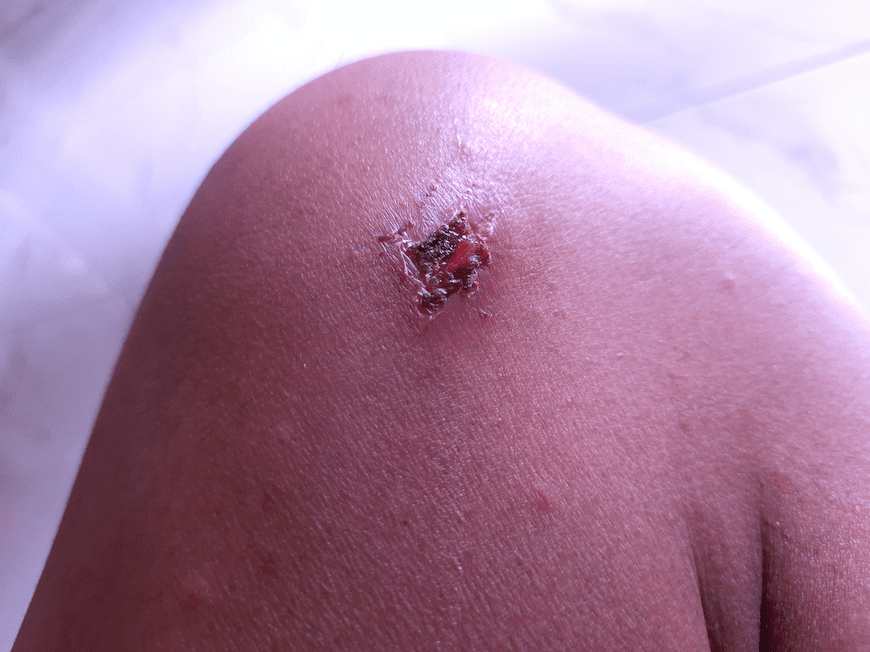Over the last few years, University of Vermont Medical Center doctors noticed a disturbing trend: a rising tide of patients with blood infections. Some of them even showed up with burning, necrotic flesh wounds.
The wave of patients prompted UVM researchers to dig deeper. What they found was a notable jump in community-acquired group A Streptococcus (GAS) bloodstream infections. Specifically, they found seven GAS infections from 2020 to 2021, and 64 from 2022 to October 2023. The number showed a 900% increase between the pair of two-year periods.
Understandably, the record surge drew the attention of the U.S. Centers for Disease Control & Prevention (CDC), which published the findings in its latest Morbidity and Mortality Weekly Report.
Xylazine Linked to Blood Infections
The CDC reported the spike in invasive GAS infections, which tagged injection drug use and homelessness as recognizable risk factors. Subsequently, the investigation unearthed a link between the surge in GAS infections and the introduction of xylazine, a ‘zombie drug,’ into the local drug supply.
UVMMC Infection Preventionist Monica Raymond told the Burlington Free Press that the rise in infections hasn’t slowed this year, with “four to five cases of blood infections reported per month, 70% being in people who inject drugs.”
“Something that stood out is all but one of them had skin wounds,” Raymond told reporters in a Zoom press conference. “The vast majority had multiple wounds, some very extensive on a good portion of limbs, sometimes down to the bone. These were very serious infections.”
A Vet Tranq Makes Its Way Into Street Drugs
Xylazine, according to the CDC, is a non-opioid sedative or tranquilizer that’s become an increasingly popular additive to street drugs from cocaine to fentanyl. Dealers have started using it to either boost the effects of the base drug or drive up its street value.
The agency added that the “DEA has seized xylazine and fentanyl mixtures in 48 of 50 states, and the DEA laboratory system reported that approximately 23% of fentanyl powder and 7% of fentanyl pills seized by the DEA in 2022 contained xylazine.”
Notably, most of the Vermont patients presented with concurrent skin and soft tissue infections, often accompanied by multiple wounds. Despite multiple hospital visits for wound care in the months before diagnosis, the patients still faced challenges. Most of them were hospitalized for intravenous antibiotic therapy.
The report underscores the desperate need for proactive public health interventions. As a result, UVMMC officials have pushed efforts to improve access to care for opioid use disorder and wound management.
The university is also exploring joint initiatives with local groups and public health authorities to deliver essential wound care services in community settings. The goal is to stem the tide of infection and fatalities.
Hope on the Horizon
But there is hope. Chemical biologists at Scripps Research, a San Diego-based biomedical nonprofit research facility, have developed a vaccine to block the effects of xylazine. The vaccine, the researchers explain in a paper published in Chemical Communications, works by training the body’s immune system to attack the drug.
“We demonstrated that a vaccine can reverse the symptoms of a xylazine overdose in rodents,” study senior author Kim D. Janda, PhD, and chemistry professor at Scripps, explained. “There is currently no remedy for xylazine poisoning other than supportive care, thus, we believe our research efforts and the data we have provided will pave the way for an effective treatment in humans.”
So, Janda and his team crafted a vaccine using a design principle that Janda pioneered, “which relies on pairing the drug molecule with a larger carrier molecule and an adjuvant.”
“A monoclonal antibody treatment could be given in tandem with the vaccine to provide both immediate and long-term protection from both opioid substance use disorders as well as opioid-xylazine overdoses,” Janda added. “This strategy could make a significant impact on the opioid epidemic.”
Further Reading
Skin-Rotting ‘Zombie Drug’ Xylazine Tied to Increase in US Drug Overdoses
The Appearance of Xylazine in the United States as a Fentanyl Adulterant




